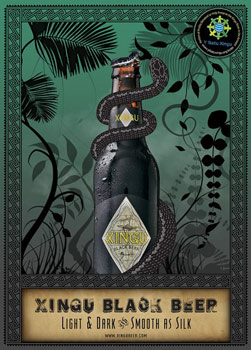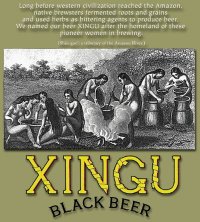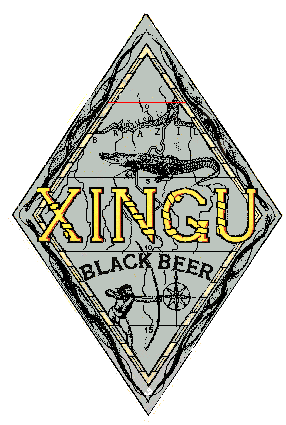FLAVOUR MYSTERIES OF THE AMAZONIAN DELTA
Bringing the past into a modern day context...
Certain beers it seems are surrounded with an element of controversy, and one such beer that fits this criteria perfectly is Xingu from Brazil.
From its inception it appeared to be a case of fact stranger that fiction, with a tale that for many was pushing the boundaries of credibility a tad to far.
But, for all this perhaps there was an element in its creation that has been misunderstood.
Xingu was born out of the adventures of American Anthropologist Alan D. Eames who scoured remote regions of the world in search of ancient beer styles.
One such trip involved a hazardous trek through the Amazonian jungle where he claimed to have discovered origins of a 'black beer' being produced as far back as the mid 16th century, although no longer produced today.
The beer was said to have been held in high regard by the Amazonian's, possessing an almost mystical status, and it was the responsibility of the women of the village ( similar to the 'Ale Wives' of European beer culture ) to produce the prized nectar.
The ingredients seemed to comprise of corn and manioc as the fermentable material, with herbs and spices for flavouring (again similar to European tradition prior to the introduction of hops, who's preservative powers transformed beer production) . The 'blackness' of the brew would derive from either the corn or manioc being roasted.
The fermentation was said to be induced by the unsullied maidens of the village who would chew on malt and deposit their spittle into the brewing kettle to kick start the fermentation!
Whilst this may have been possible ( and malted barley does indeed additionally carry the diastatic enzymes necessary to break down other starches) the most likely way of producing fermentation ( as still practice today ) was to let nature take its course...with 'wild yeast' taking control of the brew.
Wild yeast has a tendency to produce sour/acetic notes, so the hefty addition of herbs and spices would help mask the flavour.
Either way, no doubt it would have lacked any keeping qualities ( especially given the Amazonian heat ) so, as the men of the village would gather around to imbibe, it would have made the ideal, if potent, 'session' brew!
When, in 1986, it was decided to re-create a new version of the beer it came under fire in several quarters for lacking 'authenticity'.



Whilst brewing historians and academics would naturally frown upon a beer that failed to use original techniques, ingredients and processes, the commercial reality in giving the beer a more mainstream appeal would require a new approach.
The beer was designed to pay homage to the Amazonian Brewster's of the past, recognise their contribution to Brazilian beer culture, and acknowledge it as such. Xingu's modern day manifestation is more an instance of keeping this message alive, and in this context, it has been successful.
So what of the modern day interpretation itself?
Xingu is produced in the German 'Schwarzbier' style using lager techniques in its production. It has an inviting aroma with lightly roasted coffee notes, and the body is medium weighted with liquorice, chicory, and subtle molasses flavours. It is cleanly made, and at 4.7%alc/vol would certainly have a more modern day 'session' appeal than its forebear!
Xingu today is more a fusion between two distant continents in terms of heritage and style, but the Amazonian maidens of old would no doubt be pleased to see their beer has a global presence!
--------------------------------------------------------------------------------------------------------
TO RETURN TO ARCHIVE CLICK ON ARROW TOP OF PAGE